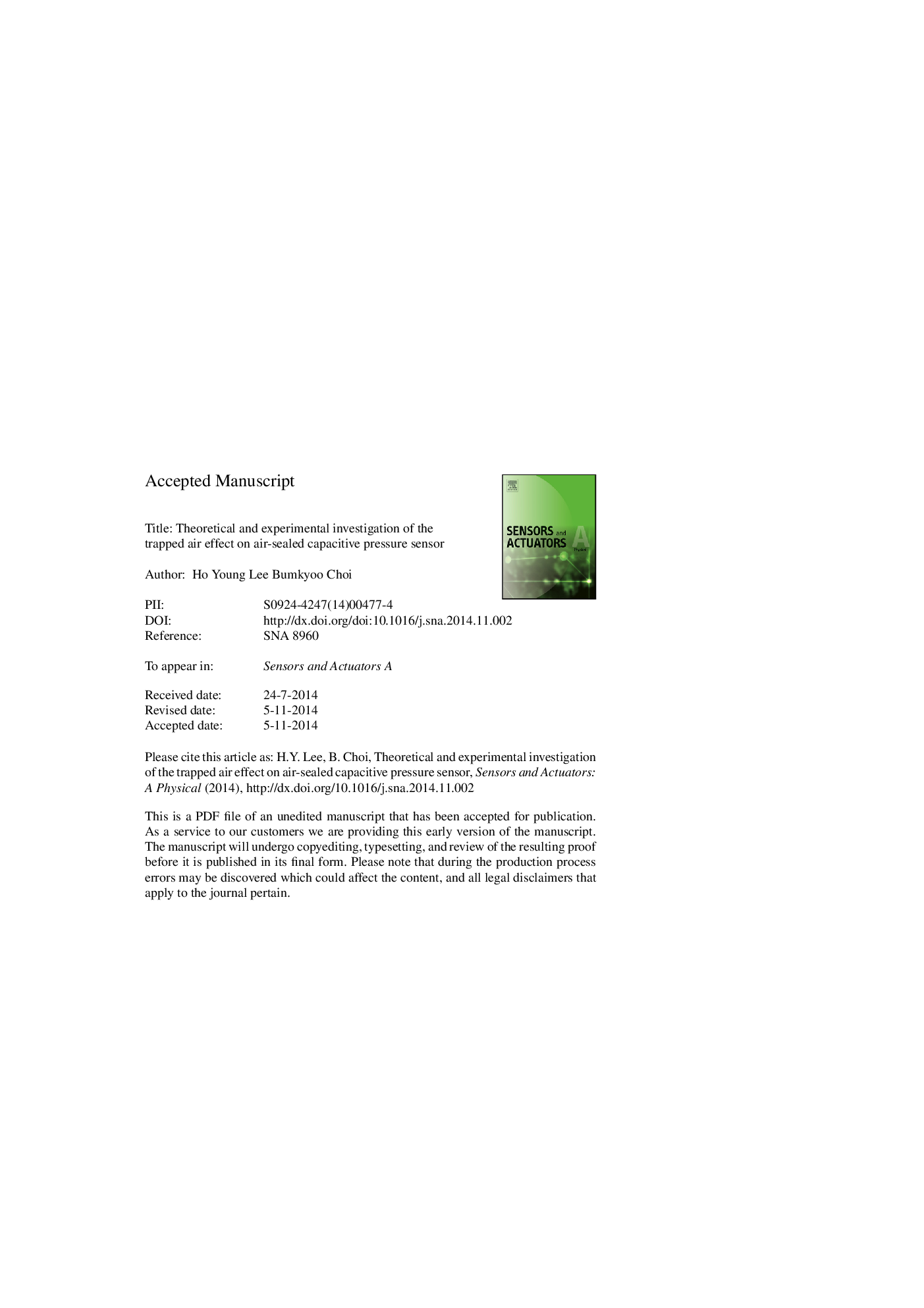| Article ID | Journal | Published Year | Pages | File Type |
|---|---|---|---|---|
| 7136542 | Sensors and Actuators A: Physical | 2015 | 28 Pages |
Abstract
This study presents the effect of the air trapped in the cavity on the performance of an air-sealed capacitive pressure sensor investigated by theoretical analysis and experimental validation. As a result, the sensitivity of a typical air-sealed capacitive pressure sensor can be improved significantly by adopting additional air chamber to increase the trapped air volume of the sensor. For theoretical analysis, the diaphragm deflection and the relative capacitance change of the sensor are formulated by considering the air pressure within the cavity affected by the diaphragm deflection and ambient temperature. In experiments, a passive wireless LC resonant telemetry scheme is employed to monitor the applied pressure by integrating an inductor coil with the fabricated sensor. The obtained result of the sensor having a flexible diaphragm such a natural rubber latex (NRL) shows the sensitivity improved more than 15 times by employing additional air chamber at room temperature compared to that of the sensor without it. Consequently, the test result of the NRL sensor with additional air chamber shows a pressure sensitivity of 8986Â ppm/kPa and a pressure responsivity of 1.391Â MHz/kPa in the pressure range of 1-10Â kPa. In addition, the effect of ambient temperature on the response of the air-sealed capacitive pressure sensor is measured and examined through comparison with the analytical results.
Related Topics
Physical Sciences and Engineering
Chemistry
Electrochemistry
Authors
Ho Young Lee, Bumkyoo Choi,
